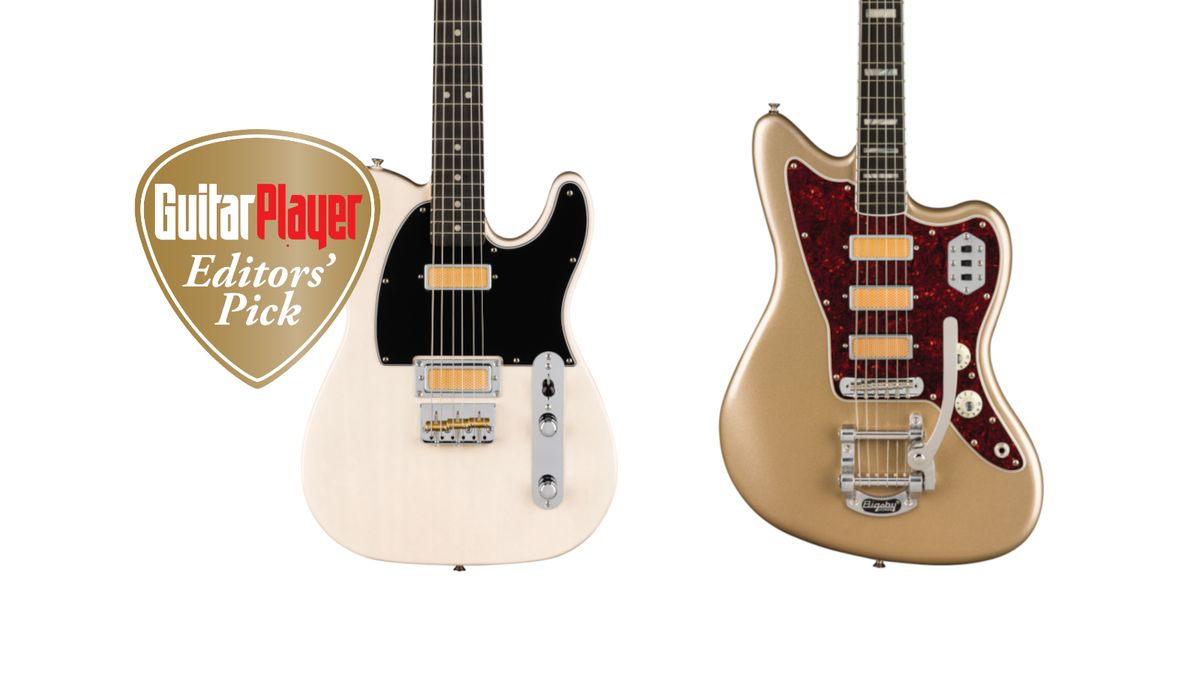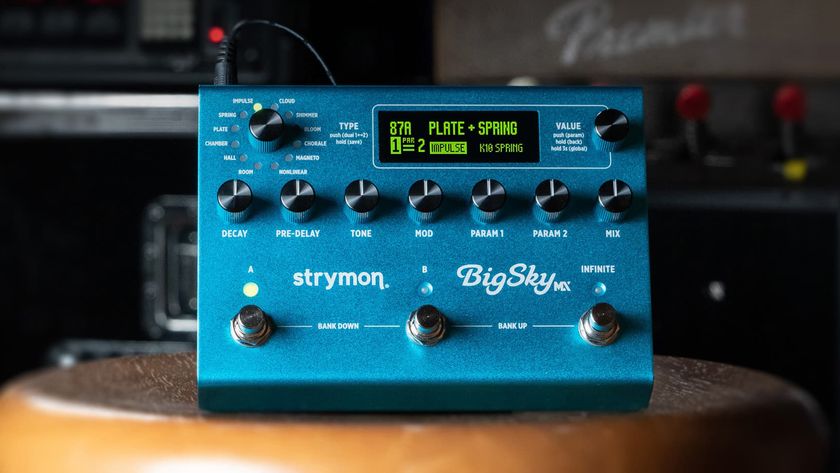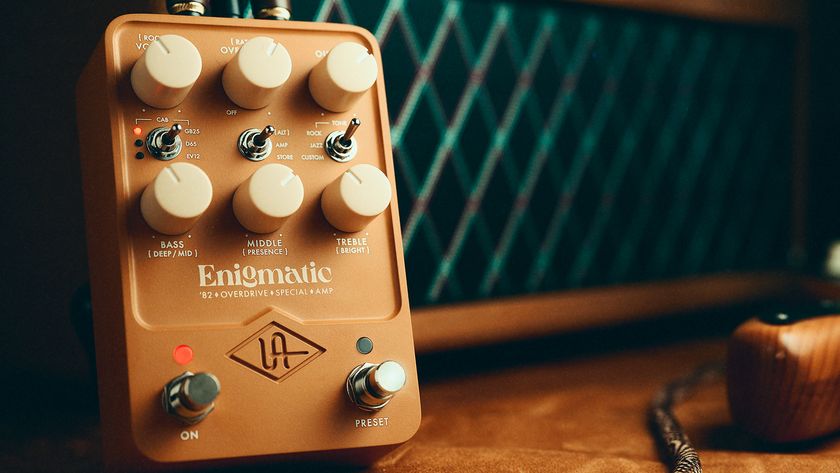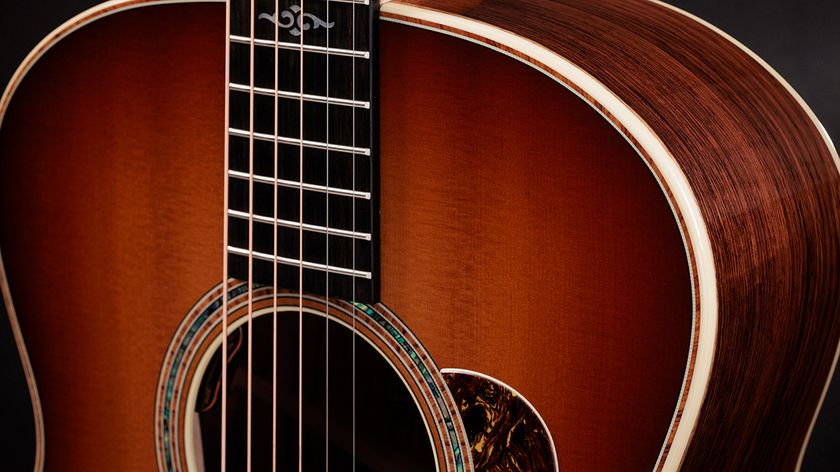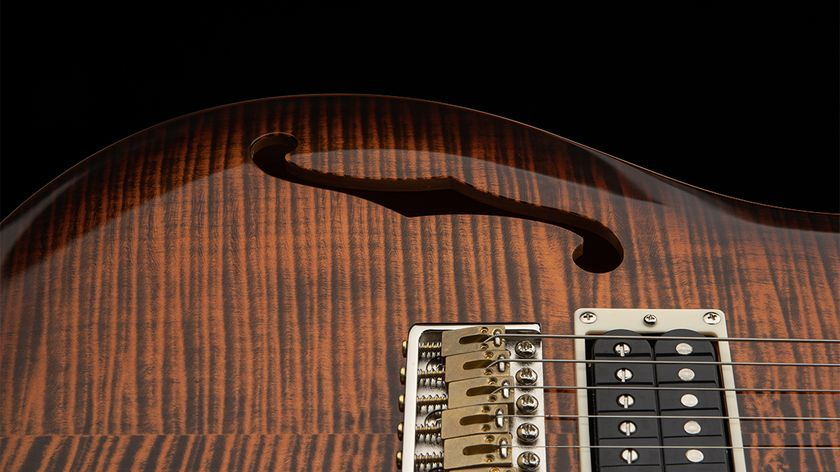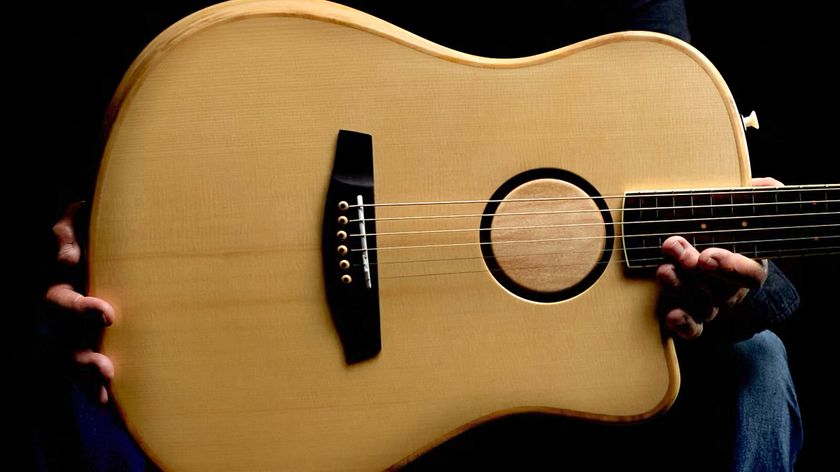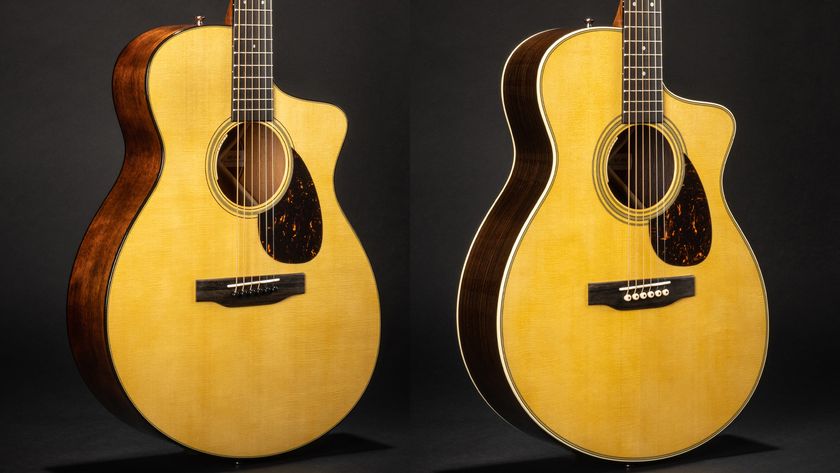GuitarPlayer Verdict
Fun, funky, and entirely viable new models in a relatively affordable lineup
Pros
- +
Gold Foil Jazzmaster: A stylish and creatively reimagined take on the Jazzmaster, well constructed for its price, offering a versatile sonic package
- +
Gold Foil Telecaster: Impressive sonic range from characterful mini-humbuckers
Cons
- -
Gold Foil Jazzmaster: It’s pretty heavy for a Fender guitar
- -
Gold Foil Telecaster: Not a traditional “gold foil” pickup (but they sound great nonetheless)
You can trust Guitar Player.
Should we consider it ironic when the mighty Fender finds inspiration in C-list catalog guitars of the 1960s? Whatever the answer, Fender’s creative reimagining of its classic designs has been firing on all cylinders in recent years, and the new Gold Foil Collection further exemplifies that sense of adventure. Although these Jazzmaster and Telecaster models are named for the pickups mounted into them, it’s obvious at first glance that Fender has used the electronics as a springboard to create new renditions of these classic shapes, and the immediate visual appeal of each is impossible to deny.
Those fun, funky pickups used on myriad Harmony and Silvertone guitars of the late ’50s and ’60s have been enjoying major popularity for quite some time now. And while this isn’t the first time Fender has put some form of gold-foil pickup on a guitar, it is indeed the first time the company has used the Gold Foil moniker to name an entire series. Personally, I’ve been a fan of original gold-foil pickups for eons. I have a particular predilection for the Rowe/DeArmond “S” and “diamond” cover pickups used on Jupiter, Bobkat and Silhouette models [see GP, 11/20], among others, and have long crowed about what underappreciated little sonic splendors these were…until they became very much appreciated, and you could hardly buy them anymore.
Vintage gold-foils came in several variations from different makers, and some of these have been recreated by winders using specs and materials very close to the originals (Lollar’s Gold Foils, which I reviewed in GP in 2013, for example, follow the Teisco template). The beyond-skin-deep key to most of these, though, was the single coil wound around a simple rubberized-ferrite magnet using relatively thin wire, often 44 AWG versus the 42 AWG used for most traditional pickups. In other words, they were made on the cheap, for sure, but by some happy accident they can sound utterly glorious in the right setting.
Many guitar and pickup makers alike have leaned into the gold-foil esthetic more than the internal construction in recent years, using the look as a handy housing for a more conventional pickup. The units used here by Fender are in fact mini-humbuckers (they are extremely close to vintage Firebird mini-humbuckers in size) with cutaway chromed outer covers and gold-foil tops.
Otherwise, there are several other departures from the Fender tradition in each guitar. Both have bodies made from solid mahogany – ostensibly in a bid to warm up the potentially bright pickups – plus ebony fingerboards. Classic elements return, with bolt-on necks that are solid maple beneath the ’board, and the seminal Fender 25 ½-inch scale length. Let’s dive in.
Gold Foil Jazzmaster
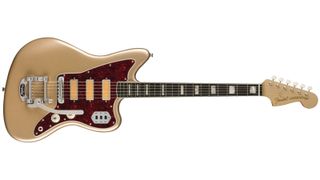
Offsets are certainly having their moment. The shape takes so well to a variety of ultra-stylish, retro-themed looks, and Fender has renewed its appeal once again with the Gold Foil Jazzmaster. Our review guitar comes in Shoreline Gold with matching headstock (body finished in gloss polyester, neck back in satin urethane), and it’s a fantastic look alongside the red faux-tortoiseshell pickguard and bound fingerboard with pearloid block markers, a nod to the post-’66 Jazzmasters. (The other finish option is a Candy Apple Burst with black headstock, a look that takes the model even closer to the Silvertone/Harmony of the ’60s.)
The neck is carved to Fender’s ’60s “C” profile, a rather slender shape with a depth of .810 inchs at the 1st fret. The fingerboard has a 9 ½-inch radius, and the width across the synthetic nut is 1.65 inches (around 1 21/32 inches). In something of a surprise twist to the Jazzmaster format, this model comes equipped with a Bigsby vibrato tailpiece rather than a Jazzmaster/Jaguar vibrato. It’s partnered with a rocking Mustang bridge, a piece of hardware many players have used over the years to solidify their own offsets’ performances. Up top, Fender’s Kluson-style tuners carry white buttons, another nice nod to the Gold Foil’s “catalog guitar” inspirations.
This three-pickup Gold Foil Jazzmaster screams “Strat alternative,” and its setup allows for even more pickup combinations. A three-switch Jaguar plate on the lower horn has been adapted to hold an on/off switch for each pickup, enabling the neck-bridge and all-on combinations that the Stratocaster with five-way lacks – and all hum-canceling at that.


The guitar played well right out of the included gig bag (and even better after I adjusted the action a little to suit personal taste), and exhibited a full, crisp, clean and balanced tone unplugged. Given the mahogany body and Bigsby, the Gold Foil Jazzmaster leans a little heavy at well over nine pounds, although that’s not too far toward crazy for an offset-style instrument, and I never felt the weight impeded playing comfort. All in all, fit and finish were superb on our test sample, and the guitar makes a fine example of what Fender’s factory in Ensenada, Mexico, can achieve these days.
Tested through a 65amps London tube amp head and 2x12 cab, a tweed Deluxe-style 1x12 combo, and a Neural DSP Quad Cortex into studio monitors, the Gold Foil Jazzmaster revealed a wealth of alternative and almost familiar tones. One of the first things you notice when plugging in is that the Gold Foil Jazzmaster really doesn’t sound much like a Fender guitar at all, in the pure sense, and that’s likely part of the plan. Its voice is clear, rich and full, with just enough edge to maintain some aggressive character throughout. It’s certainly bright, too, but not piercingly so. I had worried the ebony fingerboard might tip it over the edge. It doesn’t, in my estimation.
As such, it really has a sound of its own, and one that works as well for thick jangle as it does for bright crunch. When playing styles I might otherwise perform on a traditional Fender- or Gibson-leaning guitar, I found the Gold Foil Jazzmaster enhanced the former with a little more thickness and muscle, and the latter with a little more brightness and articulation. Funnily enough, I’ve always thought vintage Firebird mini-humbuckers had an edge of gold-foil tonality in them, and these Fender units hint at that, too. Overall, though, they’re definitely more in the mini-humbucker camp, and that serves this guitar well.
Specifications
- NUT: Synthetic bone, 1.650” wide
- NECK: Maple, 25.5” scale length, ’60s “C” profile
- FRETBOARD: Ebony, 9.5” radius
- FRETS: 21 narrow-tall
- TUNERS: Fender vintage style
- BODY: Solid mahogany
- BRIDGE: Mustang rocking bridge with Bigsby vibrato tailpiece
- PICKUPS: Three Fender Gold Foil mini-humbuckers
- CONTROLS: Master volume and tone, individual on/off slide switches per pickup
- FACTORY STRINGS: Fender USA 250R nickel-plated steel .010–.046
- WEIGHT: 9.5 lbs
- BUILT: Mexico
Gold Foil Telecaster
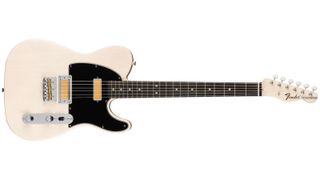
Although it’s obviously shaped like Fender’s seminal single-cutaway, the Gold Foil Telecaster’s chassis adheres to the basic specifications of the Jazzmaster, other than in its 12-inch fingerboard radius, its lack of binding, and the truss-rod adjustment point, which is on the headstock rather than the body-end, as on the Jazzmaster. Otherwise, this is a solid Tele by any measure, and a real looker, too. The White Blonde body with matching headstock somehow benefits from the classic Telecaster finish, and the entire look speaks of a subtle elegance that really works.
This one carries two Gold Foil mini-humbuckers, the one in the bridge position further tipping off the Firebird leanings in its chrome Firebird-inspired mounting ring. They’re wired to the standard three-way switch with master volume and tone, and the bridge is a chopped trad-Tele affair with through-body stringing and three brass barrel saddles. (There is no compensation tilt on these, but the guitar intonates well, regardless.) The Gold Foil Telecaster plays faultlessly from nut to joint, arguably even more smoothly than the Jazzmaster, and it weighs about a pound less, too.


Plugged into the same rigs, the Gold Foil Telecaster delivers a great blend of something old and something new, ultimately resulting in something inspiringly different. As much as I enjoyed the Jazzmaster and found it a thoroughly successful adventure, the Telecaster grabs me even more. Perhaps it’s simply that the timeless single-cut workhorse just can’t fail when set up right, but there’s somehow a little more character, nuance, aggression and “mystery ingredient X” in this guitar, and it’s surprisingly inspiring as a result.
It’s also a little more of a true blend of traditional Telecaster and something else perhaps more Firebird than Harmony/Silvertone. A hefty dose of Telecaster twang is available when you want it, woven within a little more harmonic swirl and a sprinkling of characterful grit. Being the mini-humbuckers that they are, if you crank the amp or engage an overdrive pedal, the pickups help convert this guitar to an edgy, stinging rock warrior. The result is a surprisingly versatile performer in a deceptively simple package, and a lot of fun by any measure.
Specifications
- NUT: Synthetic bone, 1.650” wide
- NECK: Maple, 25.5” scale length, ’60s “C” profile
- FRETBOARD: Ebony, 9.5” radius
- FRETS: 21 narrow-tall
- TUNERS: Fender vintage style
- BODY: Solid mahogany
- BRIDGE: Chopped Telecaster bridge with through-body stringing and three brass saddles
- PICKUPS: Two Fender Gold Foil mini-humbuckers
- CONTROLS: Master volume and tone, three-way switch
- FACTORY STRINGS: Fender USA 250R nickel-plated steel .010–.046
- WEIGHT: 8.4 lbs
- BUILT: Mexico
Verdict
The Gold Foil Collection succeeded in stirring up a buzz in guitar land right from the first word of their release, and my first look at this pair reveals that this attention is well earned.
On one hand, it might be considered rather rich of Fender to name this series after the popular gold-foil pickups when these guitars do not, in fact, carry units that accurately recreate the vintage originals in any regard that’s more than skin deep. That said, the design brief has proven the impetus for crafting some fun, funky, and entirely viable new models in a relatively affordable lineup, and that’s its own type of success.
The Gold Foil Jazzmaster is a crazy-good looker and offers an inspiring bevy of tones, but there’s something even more compellingly together about the Gold Foil Telecaster which makes it an Editors’ Pick Award winner.
Visit Fender for more information.
Dave Hunter is a writer and consulting editor for Guitar Player magazine. His prolific output as author includes Fender 75 Years, The Guitar Amp Handbook, The British Amp Invasion, Ultimate Star Guitars, Guitar Effects Pedals, The Guitar Pickup Handbook, The Fender Telecaster and several other titles. Hunter is a former editor of The Guitar Magazine (UK), and a contributor to Vintage Guitar, Premier Guitar, The Connoisseur and other publications. A contributing essayist to the United States Library of Congress National Recording Preservation Board’s Permanent Archive, he lives in Kittery, ME, with his wife and their two children and fronts the bands A Different Engine and The Stereo Field.
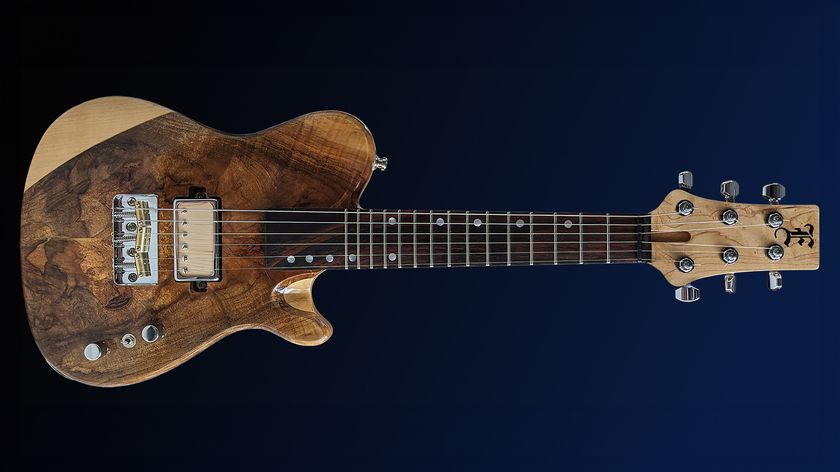
"The tuning is E to E but an octave higher than standard." Can this little guitar make you sound like you’re playing mandolin? Meet Ellis Guitars’ Soprano TX

"I ask, 'Does this guitar have riffs in it?' I'll play it for 15 minutes." As Gibson Publishing drops his new tome, 'The Collection,' Kirk Hammett takes us deep into the methods behind his six-string madness
